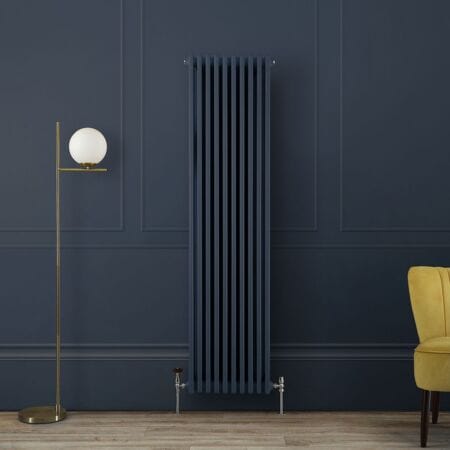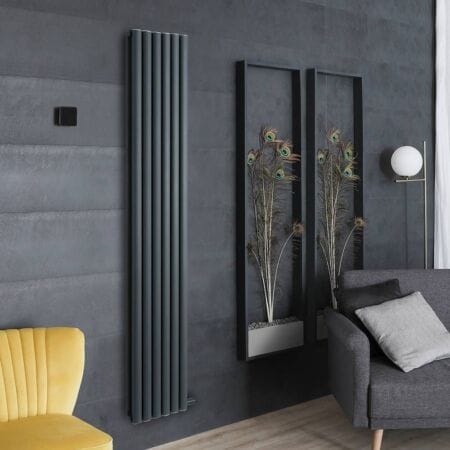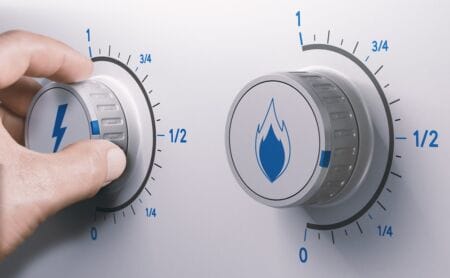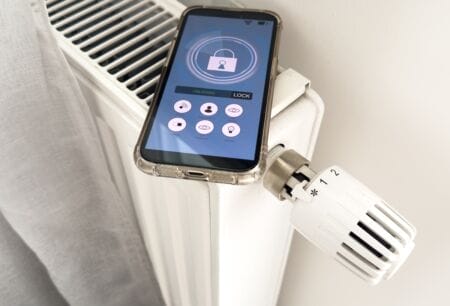Contents
ToggleWhat we'll cover...
Which colours and styles are considered neutral radiators, and which merits are making them an increasingly popular heating choice.
Neutral shades bringing standout heating style
Not a heating-related Transformers spin-off. In fact, the rise of neutral radiators is a real thing, and forming a proud and integral part of the interior design puzzle.
BestHeating have long championed the merits of anthracite radiators, as well as matte black radiator designs and similar finishes. And now, neutral radiators are making noise (not literally) in the heating market. Quietly confident. Universally flattering. And a surprisingly powerful tool in the hands of a savvy homeowner.
In this article, we’ll explore the growing appeal of neutral radiators, explaining why they’re making waves in stylish homes, and how to make them work beautifully in your space. Without any sacrifice on performance, personality, or that all-important room vibe.
What are neutral radiators?
We’re not talking about what might be considered the ‘standard’ white radiators that previously dominated UK households. Today’s neutral radiators are a far cry from the modest, simple models that once took precedence.
These are radiators designed with subtle sophistication in mind. Think:
- Soft greys (perhaps not quite 50 shades, but a vast array of warm and cool tones)
- Natural stone finishes (sand, clay, oatmeal)
- Warm neutrals such as taupe, mushroom, almond and biscuit
- Textured matte coatings with tactile appeal
- Subtle sage and olive hues for nature-led interiors
Neutral radiators are designed to complement, not compete with their surroundings. They will blend perfectly into curated colour schemes, elevate minimalist rooms, and bring quiet confidence to bold design choices. And they’re popping up in everything from Scandi-inspired apartments to country kitchens and Japandi living spaces.
Why neutral is the new black of home heating
1. They reflect our desire for calm
In an increasingly frantic world, more homeowners are designing rooms with a soothing vibe. That means earthy tones, layered textures, and subtle contrast – exactly where neutral radiators shine.
Instead of making your radiator a visual speed bump, these tones enhance the flow of a room, making spaces feel much more relaxing and cohesive.
2. They work with any palette
The beauty of a neutral designer radiator is its chameleon-like versatility. Whether you’re painting walls a moody navy, covering them in plaster pink, or keeping things bright and white, a neutral radiator will blend in seamlessly – or offer soft contrast when needed. Our coloured radiator collection has just the ticket to suit virtually any décor.
This makes them ideal for:
- Rooms where the furniture is the focal point
- Spaces with evolving colour schemes
- Homes with mixed wood tones or natural flooring
3. They're timeless and flexible
Radiator trends can move fast. But neutrals don’t age the same way that bold or metallic finishes can. If you select a well-crafted neutral radiator, the chances are it’ll still look good in 10 years – even if you’ve redecorated the room twice over.
And from an investment perspective, that makes them smart: they don’t just match your décor – they adapt with it.
4. They allow furniture and features to take the spotlight
Space-saving and style-savvy, mirrored radiators are ideal for small or darker rooms. They bounce light around the space, making it feel bigger and brighter, all while keeping it toasty. It’s like having a magic trick nailed to your wall – practical and just a little bit show-offy.
Bonus benefit: Great for last-minute outfit checks as you dash out the door.
Where to install: Bathrooms, dressing rooms, narrow hallways.
Materials and finishes: What to look for
Powder-coated steel
Durable, budget-friendly and available in a wide range of soft, muted shades. Many neutral radiators from BestHeating incorporate this coating for its chip resistance and colour depth.
Textured mattes
These finishes add tactile interest and offer a warmer feel than high-gloss models such as chrome radiators. Ideal for softening the presence of a large radiator on a blank wall.
Aluminium (for vertical styles)
Lightweight, fast to heat, and often available in subtle metallic neutrals like pewter or stone, aluminium radiators are a perfect neutral design. Ideal as a vertical radiator option for hallways, bathrooms and small rooms in particular. (Our vertical or horizontal radiator guide can assist if you’re unsure which style to opt for.)
Beware of gloss
It’s not always the case, but glossy creams and whites can look less than flattering quickly, especially under artificial lighting. Stick to mattes and satins for a more luxurious neutral finish.
Room-by-room styling ideas
Living room
Opt for a soft taupe or stone-finish panel radiator. Pair it with neutral-toned sofas, boucle cushions, oak floors and low lighting.
Bedroom
Choose an almond or oatmeal-hued vertical radiator to complement natural linens, wool throws and a calming palette. Perfect beside built-in wardrobes or to flank a dressing table.
Bathroom
Swap your chrome heated towel rail for a greige or soft clay ladder-style towel rail number. Pair with wood accents and micro-cement for a boutique hotel ambience.
Kitchen
Use biscuit or soft grey to balance white cabinets and marble counters. Or go slightly warmer if you’ve got copper or gold hardware – it’ll sing.
Hallway
Let your neutral radiator act as a visual anchor without halting the flow. Ideal in pebble grey or warm beige to complement stair runners or coat storage.
Designer touches that elevate neutrals
- Colour match your pipes and valves – White pipe covers ruin the look. Go for brushed brass, black, or tone-matched fittings with your radiator valves.
- Use tone-on-tone styling – Layer your radiator against a slightly darker wall to create a soothing shadow effect.
- Frame it naturally – Add tall plants, baskets or furniture nearby for subtle symmetry.
- Keep the accessories warm – Woods, jute, rattan, linen and boucle all soften and enrich a neutral scheme.
Are neutral radiators efficient?
Short answer: absolutely. Just because they blend in visually doesn’t mean they underperform.
- Many aluminium or steel designer radiators in neutral finishes offer fast response times and excellent heat retention properties. Use a BTU Calculator to make sure you choose one that delivers an appropriate level of heat output.
- Low water content models are ideal for pairing with smart heating systems, zoned setups, or programmable TRVs.
- And yes, you can find neutral-toned electric radiators that are Lot 20 compliant and perfect for extensions or off-grid rooms.
Form meets function – and doesn’t fight your wallpaper in the process.
Neutrals and sustainability: A smart match
Beyond the calming colour schemes and sleek surfaces, neutral radiators are a quietly sustainable choice. Why?
- They don’t depend on trends, so you’re less likely to replace them prematurely
- Many feature recyclable materials or are fully recyclable at end of life (especially aluminium models)
- They integrate effortlessly into energy-efficient heating systems, particularly so when used in zoned heating or in cohesion with smart controls
In other words: neutrals keep it stylish and sensible.
In a world where heating in interior design is increasingly visual, quick to share and trend-led, neutral radiators offer something quietly radical – lasting, timeless style. They offer a sense of design freedom, composure, and a warming presence that works with your home, rather than competing against it.
If you want an elegantly stylish yet understated addition to your home heating setup, consider the quiet confidence of a warm taupe or elegant stone. Because when done right, neutral radiators don’t fade into the background, they bring the whole room together. And you can see how to achieve the perfect positioning in our ultimate guide to radiator placement and sizing.
Let us know about your neutral radiator upgrade in the comments below, or reach out to us on Instagram, Facebook or X. Plus, you can find a wealth of alternative radiator styles to consider in our ultimate guide to radiator design and inspiration.
John is a Research Specialist for the Best Heating Advice Centre, where for over nine years he has dedicated himself to demystifying home heating for our customers. He specialises in creating clear, data-driven guides and how-to articles by collaborating directly with our team of certified heating experts and product engineers.
His work, built on a foundation of journalistic research, has helped millions of readers make confident and informed decisions about their home heating. When he’s not breaking down the heat output differentials from radiators to heated towel rails, John fancies himself as a fine football and music connoisseur.









